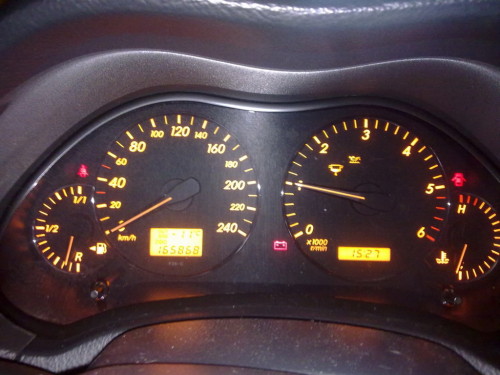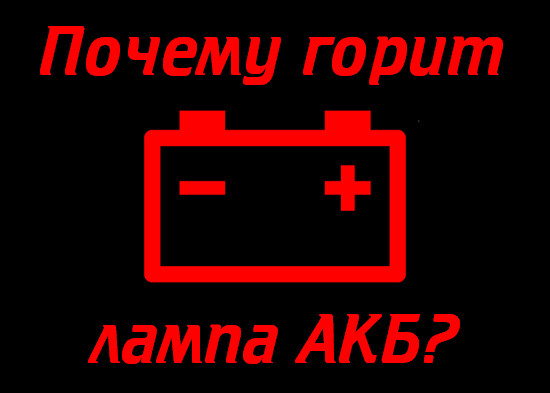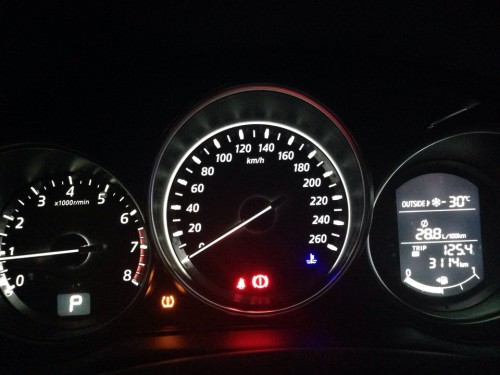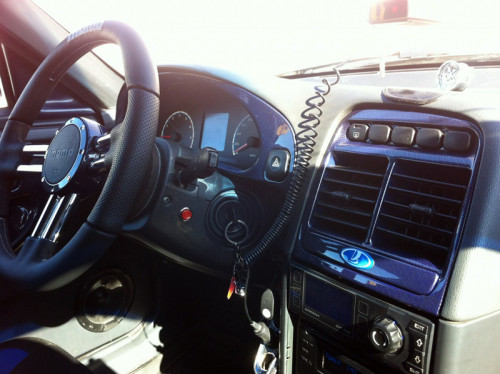Probably everyone noticed a red small box on the dashboard, which indicates the battery. And we all know that if you turn the key in the ignition lock, this lamp lights up, but immediately goes out when the motor is started. When the driver inserts the key and turns it into the ignition lock, automatic self-test is carried out in fact all the engine systems, after successful diagnostics, the indicators are extended, which means the serviceability of the entire system. The same thing happens with the battery, when everything is in order with it, the bulb goes out, but if with a battery problems, the indicator will not stop burning.
Content
Charging the battery from the generator as it happens
Even, even a novice car enthusiast, knows that the battery interacts with the generator and after starting the motor, the battery switches to continuous recharging mode. When the motor turnover rises, voltage increases at the generator outlet.

To prevent the rotor excitation in the circuit, a small relay controller is mounted, the main task of which is to reduce the current to a normal level, regardless of the number of motor revolutions. Accordingly, the voltage is maintained at the desired level. The battery lamp lights up when the charging is missing from the generator.
Battery light burns, reasons
There are a number of reasons for which the battery lamp does not go out when the motor is started:

- Bad stretch of the generator, slipping or critical belt wear. Schedule (wear) generator bearing.
- The relay regulator was faced or a diode bridge.
- Fuse overwhelmed or bad contact.
- The generator excitation chain was cut off, a strong wear of the brush holders or the generator brushes.
- Bad contact on the mass of the mass, on the output of the generator or on the terminals of the battery.

- The ignition switch was worn out, however, in this case, several light bulbs will be lit.
Tools Assistants for Diagnostics
If the battery light is on when the motor is working, it is not necessary to join it, you need to open the hood and check the voltage on the terminals of the battery. If charging is received on the multimeter, the voltage must be 13.5 - 14.3 V. When there is no charging, the voltage will be significantly lower - about 12 V.
To solve the problem, you will need the following tools:
- Two screwdrivers - cruciform and flat.
- Knife, pliers and "emery" to clean the contacts.
- Multimeter.
- "Header" - a light bulb at 12 V.

Battery light burns, the most frequent causes and ways to eliminate them
Option first. If the onboard voltmeter shows the charge, the battery lamp does not burn, the battery is completely discharged, and the multimeter demonstrates 12 V on the battery terminals.
It is necessary to clean the high voltage and terminals and terminals, after which the voltage measure again. If this does not give any result, you should check the voltage to the "30" terminal of the generator. The first multimeter electrode must be connected to the generator terminal, and the second to the mass. In this case, the voltage may be slightly higher than on the battery, then the "30" terminal should be cleared. If necessary, change the wire moving from the generator to the battery.
Option second. The voltmeter on the instrument panels and the bulb indicate charging, but the battery was discharged. At the same time, the voltage on the battery is normal, however, when loading (headlights, a signal, and so on), the charge arrow is twisted into the leftmost position. The reason is the weak tension of the generator belt, or the problem with the bearing either with pulley.
In addition, the cause of this situation may be a breakdown in the winding of the stator or the breakdown of one from the diodes. You must turn off the ignition and using the multimeter to check the diodes. If you find a breakdown, you should replace.
It will not be superfluous and checking the generator brushes. To do this, check the length of the brushes - it should be at least five millimeters. Otherwise, brushes are subject to replacement.
Option third. If, after turning the key, the battery lamp is not lit, the charge sensor does not work, and the battery does not charge, most likely the reason lies in the fuse brave. It is denoted by "F10", and its nominal is 10 AMP. This fuse should be replaced, however, if you did not see the result, the reason is most likely lies in the ignition relay or the castle itself.
Option fourth. There is no charging after turning the key, the battery lamp does not burn, but all the devices function.
With "61", the generator terminals should be removed, then connect it to minus. If, after this operation, the bulb caught fire, the cause is the excitation winding of the generator.
In addition, the reason may be bad contacts in the connector. It is necessary to clean and check it well. If there is no result, most likely a light bulb burned. If it's not in the lamp (burning with interruptions and dim), then other indicators will also burn with interruptions or dimly.
Fifth option. The lamp after starting the engine does not go out, the charge is intermittent or missing. As a rule, the cause of such behavior is bad contact of the wire with the connector on the instrument panel.
Tips of professionals
After all the above operations, you need to check the relay controller, give voltage to contacts. Also, it is worth checking the voltage on the brushes - the relay is properly if it is 12V, otherwise it must be replaced.
Related Materials
- Stove 2110, bad warm stove 2110, VAZ 2110 heating system, repairing the heating system VAZ 2110 with their own hands
- VAZ 2114 stove blows with cold air, stove 2114, bad warm stove VAZ 2114, device and repair of heating VAZ 2114 do-it-yourself, removing the stove VAZ 2114
- How to subdominize the car. How to put a jack. Types of jacks for cars.
- VAZ 2109 Fuse Block, VAZ 2109 Fuse Block Carburetor, VAZ 2109 Fuse Block Injector, Old VAZ 2109 Fuse Block, VAZ 2109 Fuse Block, VAZ Fuse Block 2109
- Car exhaust gas catalyst, faulty catalyst, pluses and cons of the catalyst, how to change the catalyst for the planeencitel
- Stove blowing cold air VAZ 2114, badly blowing the stove VAZ 2114, why badly blowing the stove VAZ 2114
- How to find out the owner of the car by the number of his car, check the car by the number of the traffic police machine, check the car by the state number of the car for free
- How to choose Used tires, Useful Tips
- Winter car road, pressure in passenger car tires in winter, good battery for the car in winter, whether to warm the car in winter
- In winter, the car is poorly started. How to make a car in winter, do you need to warm up the car in winter, useful tips
- Economy fuel consumption machines, the most economical car consumption
- Tires brands for passenger cars, labeling of car tire labeling, residual passenger car tire protector, how to pick a tire on a car brand, car tire tread pattern
- Working transmission operation, mechanical gearbox clutch work, driving with manual gearbox, useful tips
- Rear beam Peugeot 206 sedan, rear beam device Peugeot 206. Rear beam Peugeot 206 Malfunction, repair of the rear beam Peugeot 206
- Diesel fuel in winter, additive for diesel fuel in winter, how to choose the best diesel fuel
- Diesel winter does not start. How to start diesel in winter, heating diesel in winter.
- Japanese bridgestone tires, winter studded bridgestone tires, bridgestone tires brand
- Tire marking decoding for passenger cars, labeling wheels, how to choose the right tires on the disks
- Diesel engine in winter, launch of the diesel engine in winter, what oil to fill in a diesel engine in winter, useful tips
- LED backlight of the car, the backlight of the bottom of the car, the backlight of the legs in the car, the backlight in the door of the car, the backlight of the car is fine
- Recovered tires, bus tire, restored tire protector, can I use them
- Choose winter tires, which is a winter tires, which pressure in winter tires should be marked with winter tires, how to choose the right winter tires, the best winter tires 2019
- Steering rail rail, knock of steering rack, reasons for the knock and repair of the steering rack do it yourself
- Cameless car tires, a set for repair of tubeless tires, repair of the cannon-free tire do it yourself
- Russian tires, Russian tires Winter, Russian All-season tires, Voronezh AMTEL tires, Tires "Matador Omsk Tire", Kama-tires are world-class bus
- How to open a car without a key. Lost the key from the car what to do, the key from the car inside the car
- Silent tires, quiet winter tires, quiet studded bus, which tires to choose, overview tires
- Tires and safety, safety of the bus, why it is necessary to constantly monitor car tires
- Rules of safe driving of the car in the rain and slush, safe driving of the car for beginners
- Rust converter which is better for cars, rust converters to choose how to use rust transducer, professionals
- Polishing the body of the car do it yourself, how to choose a polishing paste, useful tips
- Engine durability, engine life, how to extend engine life
- Knock in the car. Knock when moving the car. What can knock in the car. How to determine the cause of the knock.
- ABS car, what is ABS car, ABS system malfunction, ABS diagnostics
- Overtaking a car when you can start overtaking a car, rules of traffic rules
- Fuel pump VAZ 2110, VAZ 2110 gas station scheme, VAZ 2110 fuel pump device, VAZ 2110 gas station repair,
- Automotive antennas for radio, automotive antenna device, car antenna do it yourself
- Front suspension Kalina, device front suspension Kalina, knock in front suspension Kalina, repair of front suspension Kalina
- Shock absorber Oil, best oil shock absorbers, pumping oil shock absorbers, how to properly pump oil shock absorber
- Clutch malfunctions, touches clutch, causes a clutch malfunction, how to eliminate










Comments